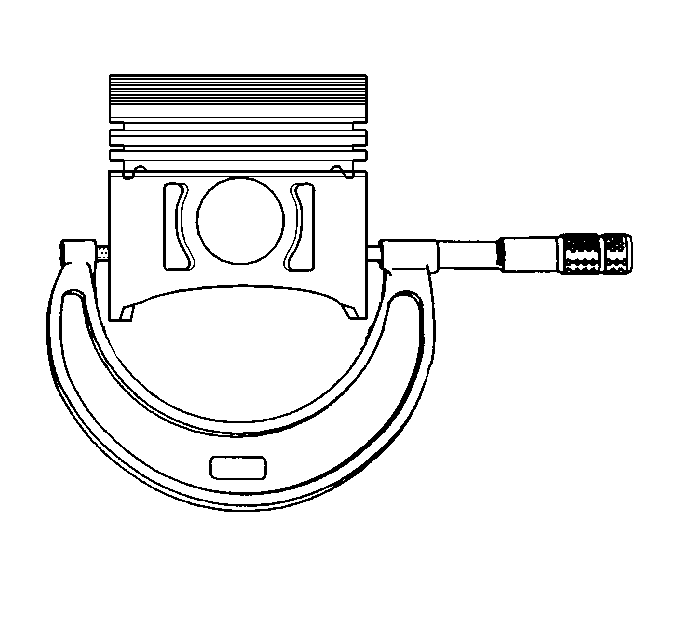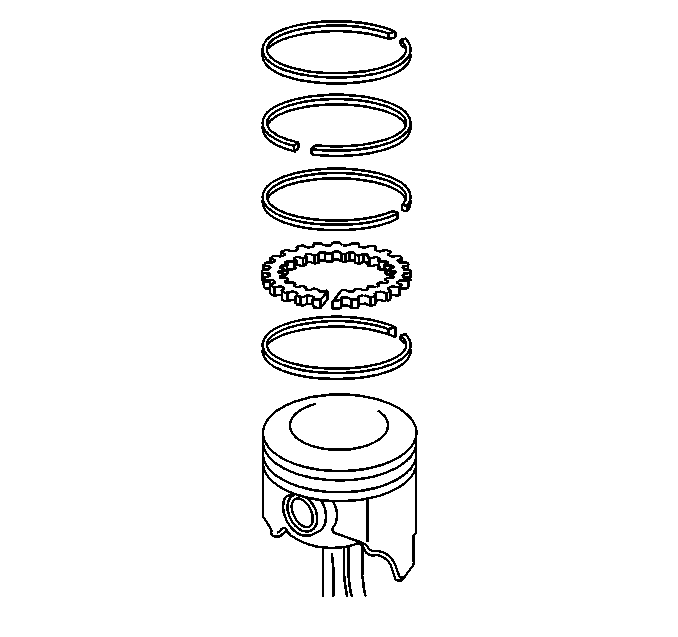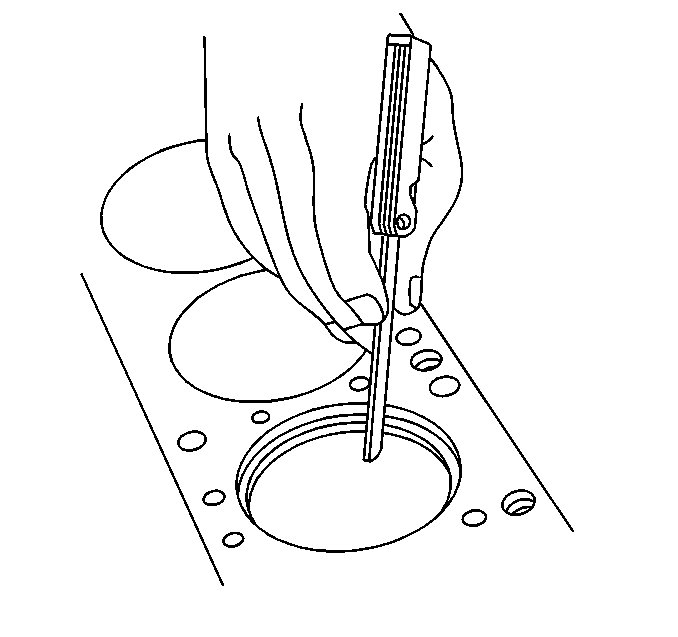
- Measure the piston diameter. Remove the piston pin to measure the piston
for size and taper.
- Replace the piston with a standard or an oversized piston if the
piston is damaged.
Important: Consider both the piston condition and the cylinder bore condition when
fitting the pistons. Production and service pistons have the same nominal
weight. Production and service pistons can be intermixed without affecting
the engine balance. If necessary, fit used pistons to any cylinder of the
engine. Ensure that the pistons are in good condition.
- Measure the cylinder bore. If the cylinder bore is worn beyond specifications,
rebore the cylinder bore. Use the following procedure to hone the cylinder
bore to the correct size:
| 3.2. | Hone the cylinder bore to obtain the recommended clearance. |
| 3.3. | Scrub the cylinder bore and the piston with soap and water. Remove
all foreign material. Dry the cylinder bore. Rub clean engine oil into the
cylinder bore. |

- Use the following procedure to measure piston-to-cylinder bore clearance:
| 4.1. | Measure the cylinder bore with a telescoping gauge. If the cylinder
bore is damaged, rebore or hone the cylinder bore to size. |
| 4.2. | Subtract the piston diameter from the cylinder bore diameter to
determine the piston-to-bore clearance. |
| 4.3. | Compare the piston-to-bore clearance with the specifications to
determine if the clearance is within the acceptable range. |
- If the used piston is not within the acceptable clearance range,
check the service piston sizes to determine if a new piston can be selected.
Service pistons are available in standard and 0.508 mm (0.020 in)
oversize.
- If the cylinder bore needs reconditioning, measure the new piston
diameter and hone the cylinder bore to the correct clearance.
- Select a new piston. Mark the piston to identify the corresponding
cylinder.

- Select a set of
new piston rings.
- Place each ring, one at a time, into the corresponding cylinder.
- Place the piston for that cylinder, upside down (top of the piston
pushing on the ring). Push the ring down to the bottom of the
ring travel.
- Remove the piston.

- Measure the ring gap.
- If the ring gap is not within an acceptable specification range,
increase the ring gap. Do this by filing any excess material from the ends
of the ring.

- Measure the piston ring side clearance (compression rings).
Notice: Do not cut the ring groove with a file or a rough edged tool. Good performance
and durability depends on the straightness and smoothness of the
ring groove.
- Use the following procedure to measure piston compression ring side
clearance:
| 15.1. | Roll the piston ring around the groove. |
| 15.2. | Measure the side clearance. |
| 15.3. | If the ring is too tight, check for nicks or burrs. |
Use emery cloth to remove burrs.
| 15.4. | Determine if the ring is within specifications. If necessary,
replace the ring. |





